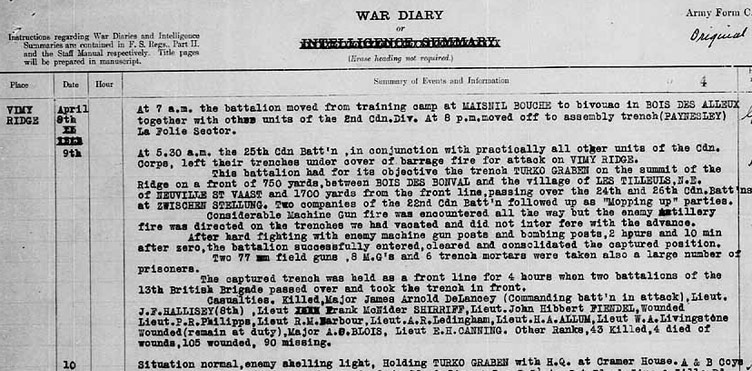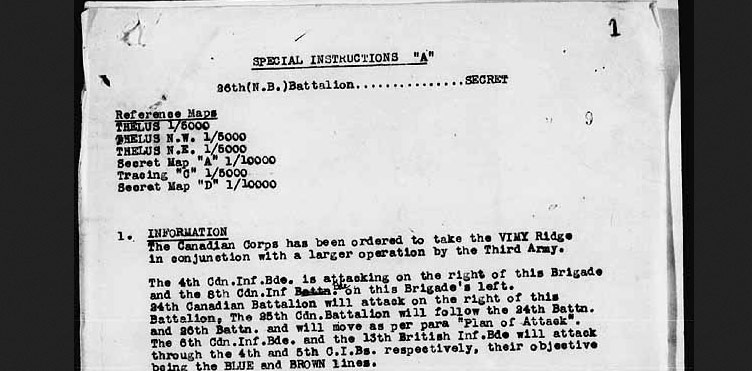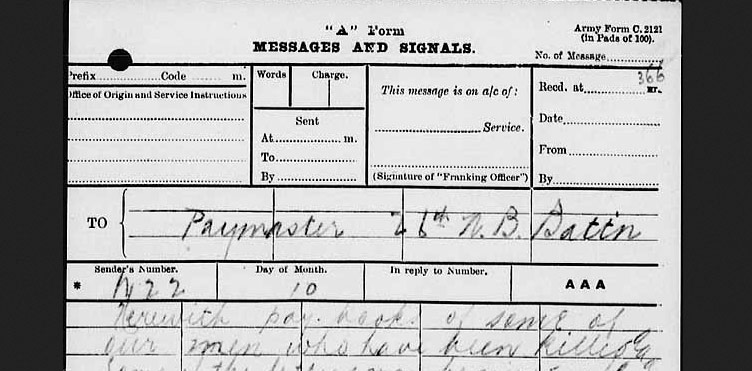The Fighting New Brunswick 26th Battalion
On April 9, the 26th Battalion (Fighting New Brunswick) formed part of the initial assault wave in the centre of the Canadian line attacking eastward from Neuville-St-Vaast. Their mission was to reach and capture a section of the first German main trench code-named the BLACK LINE.
The 26th Battalion war diary for April 9, 1917.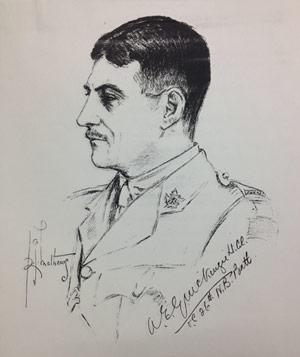 The 26th was commanded by Lieutenant-Colonel Archibald Ernest Graham McKenzie a UNB alumni from Campbellton, NB. McKenzie survived the battle at Vimy but died in the Hundred Days campaign in August 1918.
The 26th was commanded by Lieutenant-Colonel Archibald Ernest Graham McKenzie a UNB alumni from Campbellton, NB. McKenzie survived the battle at Vimy but died in the Hundred Days campaign in August 1918.
Effective Canadian artillery fire killed or drove German defenders in the 26th Battalion’s sector deep into their dugouts. Although they had to advance across 800 metres of no-man’s land in the driving snow, New Brunswick casualties in the initial assault were mercifully light. Other battalions on their left and right were less lucky.
Instructions issued to 26th battalion before the battle.Once inside the German trench line, soldiers of the 26th Battalion spent the rest of the day clearing German strong points and preparing for possible counter-attacks and supporting the 25th Battalion (The Nova Scotia Rifles) in the next phase of the attack further up the ridge.
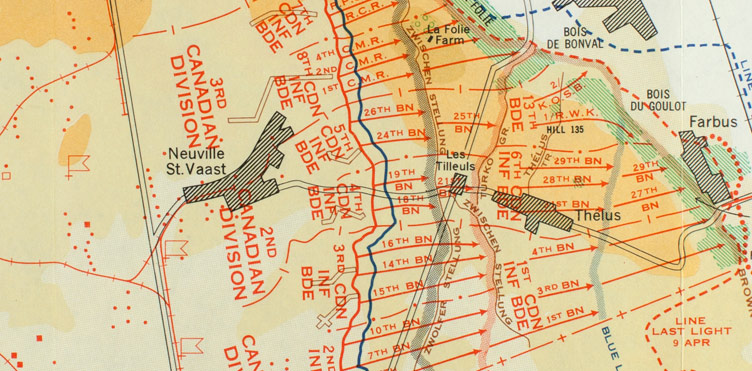
After the battle, 26th Battalion stayed in the position for the next three days in terrible weather conditions. Three weeks later, Colonel McKenzie wrote that the opening attack “was the easy part…To hang on under the weather conditions as we did was most trying on everyone. Snow, rain, hail, sleet, and our men had no overcoats or blankets.”
Despite the tough conditions, the efforts of the 26th battalion were rewarded. According to McKenzie, “it was an inspiration to us all to look back on Vimy Ridge from the German side. Our men went over the open in the early morning and dug in in splendid style, all of them realizing they were making history.”
After the battle came the inevitable casualty count.Their achievement came with a price. Casualties amounted to about 78 killed, wounded, and missing.
